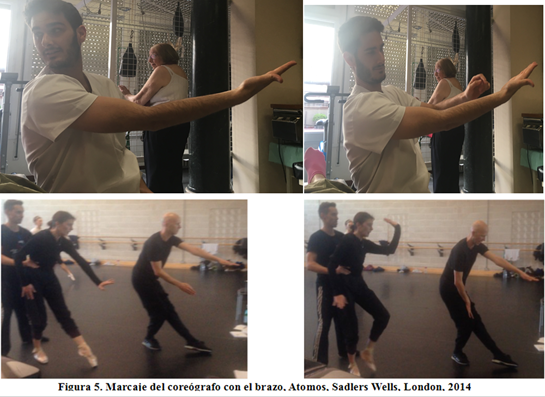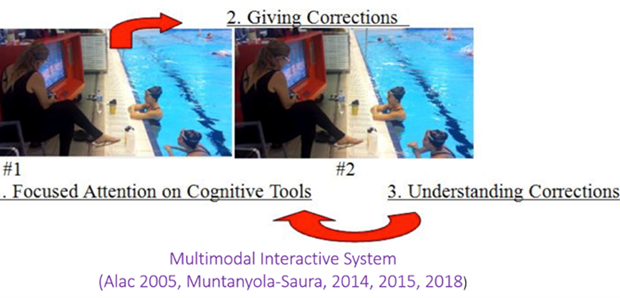This publication is part of the following research project: I+D+i “El giro digital en las artes: etnografías de prácticas artísticas - DIGART” avec la référence PID2022-140814NB-I00, financé par le MCIN/AEI/10.13039/501100011033/ et “FEDER Una manera de hacer Europa”.
Interdisciplinarity and Integration, but no Reductionism
Cicourel's interdisciplinary approach is a hallmark of his work. He believed that a discipline is little more (or less) than a convention: "a cultural definition of an area of science that scientists recognize but do not debate" (in interview, 2015a). In his view, sociology should not exist in isolation but should integrate its levels of analysis with other social sciences, particularly cognitive science and developmental psychology. This integration aims to identify invariant elements of cognitive and cultural changes over the life cycle. Cicourel was a behaviorist that looked for invariant patterns of action and communication. Cicourel's collaboration with scholars like Roy D'Andrade (1995), who described the cultural part of cognition in daily life problem-solving, exemplifies this interdisciplinary ethos. D'Andrade's work on schemas and implicit folk cultural models of knowledge1 aligns with Cicourel's efforts to bridge the gap between cognitive processes and sociocultural contexts.
At the same time, Cicourel's stance against reductionism is evident in his critique of how sociologists of culture or knowledge often accuse those who discuss cognition of reductionism. In his 2007 work, Cicourel draws on Durkheim's prologue to Les formes élémentaires de vie religieuse (1998 [1912]) to illustrate the irreducibility of different types of knowledge2. This perspective underscores Cicourel's commitment to maintaining the complexity and richness of sociological analysis without oversimplifying it to mere cognitive processes.
Ontologically, resistance to reductionism brings him closer to understand neuroscientific results without falling into the overinterpretations of pop neuroscience, which is how Robyn Bluhm identifies the bestsellers that locate agency in a brain that is separate from the body (Bluhm et al, 2012). From neurologists such as Marty Sereno at University of California San Diego (USCD hereafter) he learns how the inferences from brain imagery are not directly applicable to human social behavior3. Another colleague whose works were relevant to Cicourel's integration model is linguist and psychologist David Premack, who he worked with at UCSB, from whom he extracted the objective of looking for operant conditioning with humans. In his work on dementia, he was interested in how the conditioning could be applied to patients whose cognitive abilities had deteriorated considerably. From developmental psychology, Cicourel integrated the concept of representational re-description by Annette Karmiloff-Smith (1992). The psychologist claimed that there are backs-propagating interactions among genes, brain, behavior, and the environment. So learning is not module-specific but distributed and extended across the social environment. This theory is also paramount in my own work on artistic gossip. There is technical gossip in laboratories (Knorr-Cetina, 1999) and artistic gossip in studios (Muntanyola-Saura, 2016, Basov & Muntanyola-Saura, 2024). We can pragmatically and relationally explain what really happens in the black box of the artistic process in conceptualization, execution, and evaluation. The detailed analysis of the use of technology and materials in the form of epistemic objects (affordances) allows us to understand moments of coordination and creative projection (Muntanyola & Kirsh, 2010).

From evolutionary psychology, and more specifically from Michael Tomasello (2014), co-director of the Max Plank Institute for Evolutionary Psychology, he applied the idea of evolved cognitive mechanisms such as joint attention, which allows us to read intentions and interacting. This proposition is also very important in my own work on joint and distributed attention. Both in scientific knowledge and in artistic knowledge, we semantically infer what is not there, in the perceptually immediate environment. Language is our tool to bridge this cognitive gap (Husserl). Communication is multimodal (Alac & Hutchins, 2004), distributed and situated. As Janet Beavin Bavelas (2022) from the Palo Alto School puts forward, co-speech gestures develop as part of language in childhood. Intersubjective situations that are first precommunicative are later co-created intersubjectively (distributed attention, Muntanyola-Saura, 2015b). Digital resources are objects of epistemic judgment, not just externalizations of knowledge (Knorr-Cetina, 1999).
Moreover, Cicourel's work emphasizes the importance of integrating micro and macro levels of analysis in sociological research (1981). He argues that each level has its own organization, and that earlier levels of biological evolution enable subsequent, more complex levels to emerge. However, these evolved levels cannot be reduced to earlier ones despite their interdependence. This approach is crucial for understanding how social interaction and cognitive processes are intertwined in daily life.


Bureaucracy and its Discontents...With Methodological Rigor
Cicourel might have been skeptical about theory, or rather suspicious of speculative theory, I would say. He believed that a dominant paradigm is important only if it is challenged from within and without4. That is, he was aware of the deep politics of the academic field in terms of invisible colleges and dominant paradigms. But his work is clearly an empirical application of several theoretical schools of thought: classics such as Durkheim, Weber, Parsons and Schutz, labeling theory, ethnomethodology and contemporary cognitive science. And for those last two, he was an active contributor. Cicourel's pragmatic approach is influenced by symbolic interactionism as well. Social interaction is a key dimension of social order in Cicourel's work. He explored how labeling theory, developed in collaboration with scholars like John Kitsuse, provides an alternative framework for understanding social processes (Kitsuse & Cicourel, 1963). This paper examined how local police biases and bureaucratic routines systematically bias against low-income Caucasian, Latino, and African American adolescents, distorting official statistical records.
Cicourel's research delves into the bureaucratic constraints that limit the ability of professionals, such as police or doctors, to make informed judgments. Clinical judgement is far away from Evidence Based Medicine in everyday settings. He highlights how time and money constraints restrict the amount of analogical evidence available for diagnosis, drawing parallels with the labor-intensive inferences made by sociologists during fieldwork. This analogy underscores the methodological challenges faced by both fields and the importance of heuristics, in terms of Tversky & Kahneman (1974) in navigating these constraints.
He synthesized the pragmatist philosophy of Mead with Cooley's notion of sympathetic introspection to develop a sociologically focused understanding of social life. His approach emphasized the ongoing stream of situations handled by individuals through self-indication and definition, providing a robust framework for analyzing social interactions. The social hinges on the cognitive, as in his study of cognitive overload among medical staff (Cicourel in Lozares, 2007). In this cognitive ethnography, Cicourel claims that fieldwork is needed to understand the organizational requirements, the actual development of tasks or the bureaucratic power relationships that make up what we call the local context.
In all, Cicourel did not find himself comfortable with a specific theoretical label within sociology, and he preferred to call himself a scientist with a theory and method devoted to cognitive and linguistic anthropological study of social process and social structure (in interview, 2015a).
Theory with a Methodological Side
Methodological rigor is central to Cicourel's identity as a sociologist. In his own words,
"The theoretical perspective I suggest is that every theory must have a methodological side, otherwise it's utility is limited for guiding empirical research" (in interview, 2015a).
By methodological, he implied that empirical research grounded sociology and protected its results from mere speculation. Cicourel seemed to follow a similar view to Reichenbach, one of his professors in Cornell University, whose logical positivism was a tool for achieving rigorous empirical explanations.
He believed that every theory must have a methodological side to guide empirical research effectively. Drawing on the classics like Weber, Durkheim, and Simmel, as well as symbolic interactionism from scholars like Blumer, Becker, and Goffman, Cicourel developed a comprehensive approach that integrates theory with data. His work on dementia, for example, demonstrates how aging individuals lose their self-conception and sense of social structure, revealing quasi-invariant patterns of behavior through careful observation and interaction. He embraced a monistic methodological stance, integrating insights from cognitive science and anthropology5.
The integration of different levels of analysis during research requires a specific orientation to the empirical world, namely, noting the central role played by connected speech acts and conversation in daily life problem solving tasks or mundane activities. This definition of the ethnographic stances brings about three aspects of pragmatic interaction: the importance of speech, the multimodal stance, and the distributed or intersubjective nature of cognition. And such requirements from the objects favors an ethnographic approach or, at least, a sequential design with a survey followed by qualitative validation, where selected respondents clarify in an interview their surveyed answers. In Cicourel's words,
"Surveys produce plausible correlations. But those correlations need additional research beyond tabulated outcomes. Although correlations always signify useful hypotheses, the question is how you then pursue them. Nobody wants to invest in qualitative data" (in interview, 2015a).
I encountered this problem when approaching the issue of parental regret, that is, mothers and fathers that express regret for having had children. Several questions were incorporated in a Spanish survey in Meil, Romero-Balsas and Muntanyola- Saura (2023); but the actual interpretation of responses was severely truncated by the method used. It would have been preferable to make a focus group or interview a selected group of parents with predefined socio-economic characteristics defined by the literature as relevant to parenting practices and ideals. Being a minority phenomenon, a survey was not the best method for capturing it in depth, but rather in extension.

Cicourel was particularly worried by the issue of interpretation versus speculation, and he was no outsider: at Cornell University he minored in Mathematical Statistics, and his interest in rigor and formalistic correction was an objective of his dissertation, later published as Methods and Measurement in Sociology (1964). He was advised by mathematician Jack Kiefer who recoiled from social statistics. And he was impressed by his meeting with Alfred Schutz in New York, who he visited recommended by Harold Garfinkel6. In his words:
"The discussion helped me understand the importance of creating a conversational context when seeking details about a topic and presenting clients with counterfactual ways of thinking about what they had reported earlier in the interview." (in interview, 2015a)
Video elicitation and interview prompting within observation in context became a common fieldwork method for Cicourel.
Following this line, Cicourel's goal was :
"Finding a 'metric' that would help me understand if daily life reasoning and decisions could be viewed formally without sacrificing the essential analogical nature of connected speech events, gestures, prosody, and facial expressions" (in interview, 2015a).
Despite not finishing the book he was planning to write with Garfinkel because of important differences, his demonstrations were good examples, according to Cicourel, of the type of social experiment closely related to psychology, the discipline of his undergraduate studies at UCLA.
In a way, Cicourel felt "squeezed" between fields. Because his focus on language and interaction, his work expanded towards applied linguistics and linguistic anthropology. But he found that these areas are were also strongly constrained by assumed standardized comprehension attributed to respondents' interpretation of the asked questions, in a very similar way as with sociological surveys. So, when looking for pragmatic and realistic approaches to interaction and cognition, he turned towards behavioral ecological studies of nonhuman animals in the wild. His arrival at UCSD was paramount because the department of cognitive science, together with the department of biology, had many scientists that did this type of animal cognitive ethnography, which Cicourel considered an example of rigor and attention to empirical details. He had great admiration for Jeanne Altmann (1974), a primatologist who focused on the social behavior of baboons. He considered her method a fantastic example of down-to-earth ethnography. In the same Department in Cognitive Science, he considered D'Andrade's cultural cognition theory on schemas and Morana Alač's & Ed Hutchins' (2004) work on multimodal communication teams as relevant examples of qualitative methodologies for social interaction.


My own work applies Cicourel's integrated model to artistic work. Following cognitive sociology, every social definition involves a cognitive operation. I gather as well interdisciplinary models from cognitive science: distributed cognition (Cicourel, 2007, Lozares, 2007, Muntanyola-Saura, 2016), situated and enactive cognition (Kirsh, 2024, Nöe, 2023), embodied cognition (Gibbs, 2006) extended cognition (Clark, 2016). The theoretical framework fits in the plurality of theoretical frameworks in contemporary sociology of the arts (Rodriguez-Morató & Santana-Acuña, 2022). Video-aided ethnographic work needs the guide of Activity Recurrent Episodes (ARE) to avoid getting lost in the audiovisual data. I apply grounded thematic analysis to interviews (Verd & Lozares, 2016), multimodal conversational analysis to video-aided observations(Sacks et al., 1978, Cicourel, 2007, Mondada, 2005), and gather personal networks through Social Network Analysis (SNA) (Muntanyola-Saura, 2016 in figure 4).The software used are AmberScript, ELAN®, ATLAS.ti, and Egonet/Ucinet. I propose a pragmatic and relational view based on the abduction of artistic practices in an integrated and interdisciplinary framework. The digital turn constitutes a process of institutionalizing new social practices that cognitive agents live and internalize differently. Human interaction with the environment depends on the structure and continuous flow of information that shapes our reality, forcing us to constantly adapt our beliefs and practices through technology and accumulated experience. We can explain what really happens in the black box of each phase of the creative process as an intentional process of conceptualization, execution, and evaluation. An integrated video-aided methodology offers representable qualitative data that without undermining rigor and objectivity. Multimodal communication system such as photographic positivation in figure 5 contributes to a more realistic picture of artistic practice.
- In Cicourel's words: "The organism's ability to execute many disconnected conceptual processes simultaneously hinges on the difficulty of the tasks involved, the number of events it can attend and follow, the ability to retain and retrieve information and the way experiences are socially organized" (Cicourel, 1974, p. 166).↩
- "La connaissance est formée de deux sortes d'éléments irreductibles l'un à l'autre et comme deux couches distinctes et superposées" [Knowledge is made of two types of elements not reducible to one another, like two distinct and superimposed layers.] (Durkheim, 1998 [1912], p. 21).↩
- In his words: "I asked Sereno about how I should interpret brain scans that suggested atrophy or cell death. He said this is a typical correlation that can be inferred. He noted there could be several million neurons in a designated area, is a useful informed speculation. My concern is: what kinds of cognitive and cultural knowledge and everyday practice are affected, and when it occurs, under what socio-cultural contexts do they begin to emerge?" (in interview, 2015a).↩
- In his own words: "My perspective of a "challenge" is to seek theoretical ideas and methods from other disciplines. In the social sciences, publication in journals is where the politics are 'heavy'" (in interview, 2015a).↩
- The aging process differentially affects humans with some becoming gradually more cognitively, emotionally, and culturally compromised. To summarize, you cannot have culture without cognition, and vice versa.↩
- In his words: " In the next few years, I puzzled about how Schutz' way of interviewing was useful for understanding the notion of a world known in common and taken for granted)" (in interview, 2015a).↩
